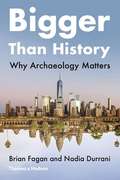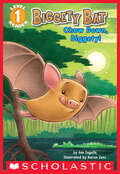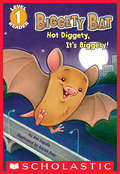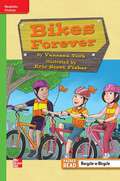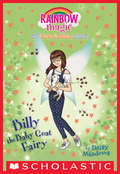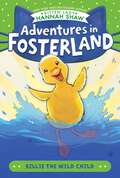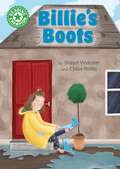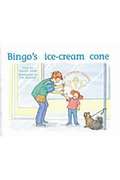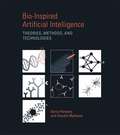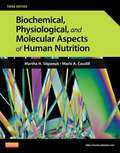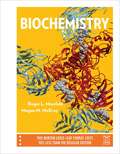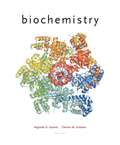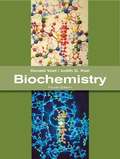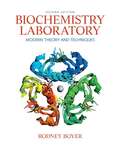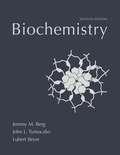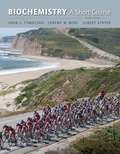- Table View
- List View
Bigger Than History: Why Archaeology Matters
by Brian M. Fagan Nadia DurraniAn exciting and much anticipated new archaeology title written by titan Brian Fagan and journalist Nadia Durrani, Bigger than History introduces students to archaeology's contributions to many of today's important debates of interest to students. Each chapter focuses on one of today's important topics, such as gender equality, ethnicity and racism, climate change, and nationality and nationalism, showing how archaeology contributes to our understanding of the issues related to those topics. Bigger than History is affordable and concise enough to be used alongside a textbook, or on its own to engage and draw students into learning about archaeology.
Biggest, Smallest, Fastest, Slowest (Into Reading, Level D #68)
by Stanford MakishiNIMAC-sourced textbook
Biggety Bat: Chow Down, Biggety! (Scholastic Reader, Level 1)
by Ann IngallsBiggety Bat is back--and on a search for his supper!"Hot diggety!" said Biggety. "Supper for sea turtle, but. . . . . . what about me?"Biggety Bat is hungry -- and looking for his supper. The swamp he explores is full of animals chowing down: frogs, cuckoo birds, sea turtles, and more.But what will Biggety find to eat? Author Ann Ingalls blends lyrical text with real-life information about a Florida mangrove swamp. Readers will love discovering the eating habits of the animals who live in this unique habitat.
Biggety Bat: Hot Diggety, It's Biggety! (Scholastic Reader, Level 1)
by Ann IngallsHelp Biggety Bat find a friend!As the sun went down in the west, a bat named Biggety left his nest.Biggety Bat is looking for a new friend. Who will it be? The snowy egret scooping up fish? The mama possum bearing babies on her back? The mockingbird singing so sweet?Ann Ingalls blends lyrical text with information about a real-life urban bat colony in Austin, Texas. Readers will love discovering this unique habitat as they help Biggity Bat find a new friend.
Bikes for Everyone (Fountas & Pinnell Classroom, Guided Reading Grade 1)
by Amy TichbourneNIMAC-sourced textbook
Billie the Baby Goat Fairy: A Rainbow Magic Book (The Farm Animal Fairies #4)
by Daisy MeadowsFarm animal antics! <br> Rachel and Kirsty are visiting beautiful Greenfields Farm. They've been given the very special job of taking care of all the baby animals that live there. But the farm is not as peaceful as it seems . . . The ducklings are barking, the lambs are meowing, and the foals are oinking. Jack Frost has kidnapped the Farm Animal Fairies' magic animals and everything at Greenfields is all mixed up! <br>Rachel and Kirsty only have one more magic farm animal left to find. Once Billie's baby goat is safely back in Fairyland, Greenfields Farm will be saved! <br>Find the magic animal in each book and help save the farm magic!
Billie the Wild Child (Adventures in Fosterland)
by Hannah ShawFrom New York Times bestselling author Hannah Shaw—also known as Kitten Lady—comes the fifth book in an exciting and heartwarming chapter book series! Three little ducklings arrive in Fosterland, but one is not like the others! Though Billie looks like Marlie and Charlie, he isn&’t a domesticated duck—he&’s a white mallard. Billie likes being in Fosterland with his friends, but he longs to eat sky raisins (also known as flies) and be free. With one webbed foot in each world, he has to choose where his heart lies.
Billie's Boots: Independent Reading Green 5 (Reading Champion #515)
by Sheryl WebsterThis story is part of Reading Champion, a series carefully linked to book bands to encourage independent reading skills, developed with Dr Sue Bodman and Glen Franklin of UCL Institute of Education (IOE)Reading Champion offers independent reading books for children to practise and reinforce their developing reading skills.Fantastic, original stories are accompanied by engaging artwork and a reading activity. Each book has been carefully graded so that it can be matched to a child's reading ability, encouraging reading for pleasure.
Bingo's Ice-Cream Cone (Rigby PM Plus Blue (Levels 9-11), Fountas & Pinnell Select Collections Grade 3 Level Q #Red (Levels 3-5))
by Annette Smith Pat ReynoldsSam and her dog are waiting for mom to come out of the shop with ice-cream cones, when the inevitable happens.
Bio-Inspired Artificial Intelligence: Theories, Methods, and Technologies
by Dario Floreano Claudio MattiussiNew approaches to artificial intelligence spring from the idea that intelligence emerges as much from cells, bodies, and societies as it does from evolution, development, and learning. Traditionally, artificial intelligence has been concerned with reproducing the abilities of human brains; newer approaches take inspiration from a wider range of biological structures that that are capable of autonomous self-organization. Examples of these new approaches include evolutionary computation and evolutionary electronics, artificial neural networks, immune systems, biorobotics, and swarm intelligence--to mention only a few. This book offers a comprehensive introduction to the emerging field of biologically inspired artificial intelligence that can be used as an upper-level text or as a reference for researchers. Each chapter presents computational approaches inspired by a different biological system; each begins with background information about the biological system and then proceeds to develop computational models that make use of biological concepts. The chapters cover evolutionary computation and electronics; cellular systems; neural systems, including neuromorphic engineering; developmental systems; immune systems; behavioral systems--including several approaches to robotics, including behavior-based, bio-mimetic, epigenetic, and evolutionary robots; and collective systems, including swarm robotics as well as cooperative and competitive co-evolving systems. Chapters end with a concluding overview and suggested reading.
Biochemical, Physiological, And Molecular Aspects of Human Nutrition
by Martha H. Stipanuk Marie A. CaudillCovering advanced nutrition with a comprehensive, easy-to-understand approach, Biochemical, Physiological, and Molecular Aspects of Human Nutrition, 3rd Edition focuses on the biology of human nutrition at the molecular, cellular, tissue, and whole-body levels. It addresses nutrients by classification, and describes macronutrient function from digestion to metabolism. This edition includes the new MyPlate dietary guide and recommendations from the Dietary Guidelines for Americans 2010, plus coverage of the historical evolution of nutrition and information on a wide range of vitamins, minerals, and other food components. In Biochemical, Physiological, and Molecular Aspects of Human Nutrition, lead authors Martha H. Stipanuk and Marie A. Caudill are joined by a team of nutrition experts in providing clear, concise, coverage of advanced nutrition.
Biochemistry
by Roger L. Miesfeld Megan M. McEvoyBiochemistry promotes understanding of biochemical concepts through highly readable chapters that consistently integrate stunning graphics with text. Its distinctive table of contents highlights how biochemical processes work, and applications to everyday biochemistry ensure that students develop a complete understanding of why biochemistry matters.
Biochemistry (6th Edition)
by Reginald H. Garrett Charles M. GrishamContinuing Garrett and Grisham's innovative conceptual and organizing Essential Questions framework, BIOCHEMISTRY guides students through course concepts in a way that reveals the beauty and usefulness of biochemistry in the everyday world. Offering a balanced and streamlined presentation, this edition has been updated throughout with new material and revised presentations. For the first time, this book is integrated with OWL, a powerful online learning system for chemistry with book-specific end-of-chapter material that engages students and improves learning outcomes.
Biochemistry Fourth Edition
by Donald Voet Judith G. VoetThe "Gold Standard" in Biochemistry text books, Biochemistry 4e, is a modern classic that has been thoroughly revised. Don and Judy Voet explain biochemical concepts while offering a unified presentation of life and its variation through evolution. Incorporates both classical and current research to illustrate the historical source of much of our biochemical knowledge.
Biochemistry Laboratory: Modern Theory and Techniques
by Rodney BoyerYour biochemistry lab course is an essential component in training for a career in biochemistry, molecular biology, chemistry, and related molecular life sciences such as cell biology, neurosciences, and genetics. <p><p>Biochemistry Laboratory: Modern Theory and Techniques covers the theories, techniques, and methodologies practiced in the biochemistry teaching and research lab. Instead of specific experiments, it focuses on detailed descriptions of modern techniques in experimental biochemistry and discusses the theory behind such techniques in detail. An extensive range of techniques discussed includes Internet databases, chromatography, spectroscopy, and recombinant DNA techniques such as molecular cloning and PCR. <p><p>The Second Edition introduces cutting-edge topics such as membrane-based chromatography, adds new exercises and problems throughout, and offers a completely updated Companion Website.
Biochemistry Seventh Edition
by John L. Tymoczko Jeremy M. Berg Lubert StryerSince its first edition in 1975, this extraordinary textbook has helped shape the way biochemistry is taught, offering exceptionally clear writing, innovative graphics, coverage of the latest research techniques and advances, and a signature emphasis on physiological and medical relevance. Those defining features are at the heart of the new Seventh Edition of Biochemistry, which again communicates fundamental concepts and the latest breakthroughs in a way that makes the information engaging and understandable for students approaching the subject for the first time.
Biochemistry: A Short Course (Second Edition)
by John L. Tymoczko Jeremy M. Berg Lubert StryerThis book covers the fundamentals of biochemistry and its topics are broadly grouped under three parts : Molecular design of life,Transducing and storing energy and Synthesizing the molecules of life.

